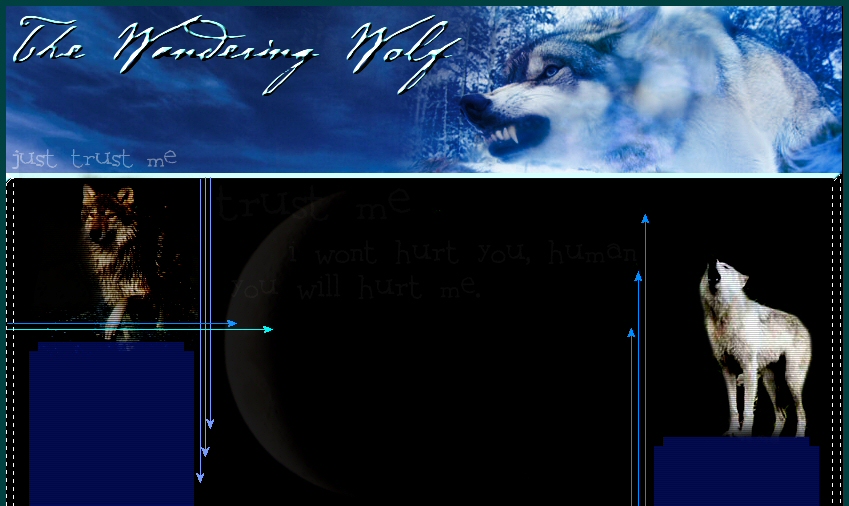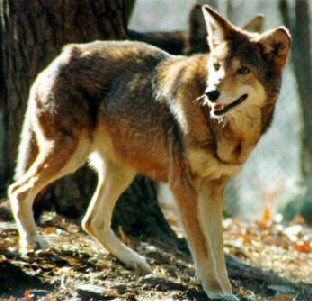

.: The Wolves :.
.: WSC Animals :.
.: The Cub :.
.: The Handwriting
.: My ABCs
.: The Basics
.: Googlism of Jade
.: The Pictures
.: The Pets
.: The Quizzes
.: The Art
.: Sister Sites :.

.: The Site :.
.: For A Wanderer
.: Competition :.
.: Contact :.
.: The Red Wolf :.

Hunting: As I stated above, the red wolf is known to hunt on its own. This behavior results in predation of smaller prey such as white-tailed deer, raccoons and small mammals such as rabbits and rodents. They have also been known to prey on domestic pets and livestock, but in very small numbers. Scientists are thinking that the hunting individually may be because of the rapidly diminishing numbers of the red wolf, as it is now close to extinction.
Pack Life: Even though they hunt solitarily, they do live in packs. Although slightly less conformed,there is still an alpha-breeding pair, offspring, and a few other wolves which aid in the raising of pups. These packs are more apt to split up then other wolf packs, so in the wild you will see more singular red wolves in the wild then gray wolves.
Geographic Range: Southeast and SouthCentral United States. Early this century the Red wolf lived as far north as Pennsylvania, as far south as Florida and as west as central Texas. Recently, however, the red wolf has dissappeared from most locations and is now held dearly in the hands of rehabilitation parks all over the country.
Rehabilitation: Unlike the gray wolf rehabilitation program, the red wolf rehabilitation program is operated much more urgently, as the gray wolves are found in nearly all of the continents. However, red wolves are not found outside of the Eastern United States.